Bosch 7100i IR Bullet Night Review Highlights Strong IR Performance.
Contents
Introduction — Bosch 7100i IR Bullet Night Review
Bosch 7100i IR Bullet Night Review – We were impressed with Bosch’s robust 7100i IR bullet camera when we tested it during the day in our busy street scene, and we’re even more impressed having tested it in the back lane at night.
Just to refresh memories, the Bosch Dinion 7100i IR NBE-7703-ALX bullet camera (embedded link to the right) – features a 1/1.8th inch sensor delivering 2688 × 1520 pixels of resolution. The focal range is 4.7-10 mm and there’s 141dB of WDR performance along with 80 metres of IR from the 850 nm IR array — invisible 940 nm IR and white light is an option.
This camera is a tough puppy – the cast alloy housing weighs 3 kg and is rated IP66/67 against water and dust ingress, and IK10 against impact. The 7100i also meets the IP6K9K rating, which makes it impervious to dust, high temperatures and high-pressure jets of water.
The Bosch 7100i IR features Bosch’s Starlight X technology for enhanced low-light performance, as well as Bosch’s HDR X (high dynamic range), which delivers a strong WDR number – I have this activated for our afternoon and night test.
The Bosch 7100i IR features Bosch’s Starlight X technology for enhanced low-light performance, as well as Bosch’s HDR X (high dynamic range), which delivers a strong WDR number – I have this activated for our afternoon and night test.
The camera is running on SEN’s local Gigabit network via an Ubiquiti Unifi 16-port Gigabit PoE switch, and I’m driving it on a custom-built ASUS gaming machine that’s well but over-spec’d for a single CCTV camera (inside we have a 12th GEN i9 CPU with 32 GB RAM, 8 GB GPU and importantly NVMe SSD drives for video stream data transfer).
Something we noted during our daylight testing was just how capable and pleasing the Bosch 7100i IR’s analytics performance was for street work. It was more pleasing still to find that in more challenging low light applications Bosch’s AI capability remains a real benefit thanks to its accuracy and reliability. The success rate for correct entity detection was close to 100% for our test subjects during the afternoon daylight.
Bosch 7100i IR — Renditioning & Video Quality
Given this camera is a low light specialist, I’m going to undertake 2 scenarios – the first out front where there’s more reflectance and traffic, and the second out back where things are reliably murky but where there’s less going on.
Afternoon Front
I start my testing with the camera out the front of the office, looking at our familiar street scene in the afternoon. I do a bit of playing around with settings before getting started and continue tweaking throughout the process, seeking the best balance of sharpness and low blur. This is a balanced picture, with good colour rendition that’s not too saturated. Motion blur and tone mapping are well controlled, and I’m pleased with sharpness and contrast.
The camera was wound in a little after the daylight test and I go back to full wide, noting the slightly higher than usual barrel distortion, before winding in a little. Not being at the widest settings is going to impact slightly on aperture, but there are parts of the scene I don’t need to aggregate pixels on.
Night Front Colour (Bosch 7100i IR Bullet Night Review)
It’s now around 7.22 pm – at the time we were still on daylight savings time in Sydney, but Autumn is well and truly on its way. Lux levels are comparatively low on this grey day, and fall precipitously in a surprisingly short space of time. At this focal length, depth of field is a particular strength of the camera, and it’s easy to see why the engineers opted for 85 metres of IR to complement reach.
A point arrives looking out through the front window when the scene on the monitor detaches itself from reality, staying bright and colourful despite lux levels rapidly falling below 40 lux on their way to sub 2 lux under the lens. We have a mix of low-pressure sodium lights and LED’s on the street, but they are widely spread, and the light is screened by trees.
With some cameras, there’s a point in falling light where you suddenly see all the design compromises simultaneously – the strange colour tones, the pulsating amplification noise, the bloom around headlights, whacky ghosts in lenses and housings. But with this Bosch 7100i IR bullet, the scene holds in a very uniform way. There’s a slight alteration of colour tone, but it’s only once the light levels have bottomed out at sub-2 lux that there’s visible noise, slight blur and a little blooming from lights very close to the lens.
At this early point in the test, it starts to become clear how capable Bosch’s AI is – I’m getting AI ID and on cars, pedestrians, and motorcycles out to 50 metres in a very cluttered street scene in very low light. I had already found this to be a benefit during the daylight scene – it’s better still at night. Bosch’s object and people detection works deep into the scene – at this point in the test the clutter on the street made me think IVA pushed to 50 metres, later in the lane I realise it pushed 80 metres with the lens nearly wide open.
The strength of the camera is most apparent when there’s a lot going on – the ability to handle shadows, bright points and movement. The strong colour rendition and the nicely balanced resolution and compression strategies combine to give situational awareness across and through a deep angle of view.
“The strength of the camera is most apparent when there’s a lot going on – the ability to handle shadows, bright points AND movement.”
Night Front Monochrome
At this point, I’ve pushed the camera into night mode, and I’ve got IR activated and decided I can see very slight number plate flare. IR flare is so subtle I wonder if IR is activated at all, and I went outside and looked up at the array to be certain. The usual extravagant flare cues don’t apply with the Bosch 7100i IR.
On the other side of the street, I can see pedestrians passing each other, a group walks down the crown of the road laughing, on my side someone is heading home from work, a resident comes down their front steps and way up on Albion St I can see a person walking up the hill and can get a sense of attire. This is all good work operationally, and it’s delivered at about 5 mm focal length – I still have 5 mm optical reach up my sleeve.
As usual, monochrome impresses with its capacity to express detail through grey scale contrast, translating into sharpness that delivers increased detail and enhanced depth of field. An IP camera works less hard in monochrome – I imagine there’s slightly less latency in my scene, but might have been over-thinking it.
Lane Afternoon
I undertake my second scenario a couple of weeks later. I take the camera out back and set up the Magic Arm looking up to Albion Lane, which is about 70 metres from the lens and 5 or 6 metres wide – I judge this scene gives me about 80 metres depth of field. The first thing is to play around with optical zoom. I want something a bit longer than I was using on the street, but want to see what’s going on at the camera’s feet.
It’s possible to partly achieve this with camera angle, but after mucking around a while at longer focal lengths, I back out again and settled on 5.5 mm as giving me the best balance of angle of view and depth of field.
I start off the test in the afternoon, which gives me a chance to see performance with some backlight. I notice amplification noise stepping through large static wall areas – given the benign conditions, this seems like the camera is prioritising areas of movement – that’s the middle of the lane where some workers are loading a small truck.
I’d say I have court admissible identification to about 15 metres out here, and recognition to about 40 metres. Although I’m spreading pixels with digital zoom at this resolution, when a person walks up Albion Lane around 75 metres from the lens I have gait, attire, hair colour, skin tone, carried items, and more.
The afternoon chugs along – people come out and collect their bins, pedestrians, and delivery drivers go up and down, mums push prams, neighbours walk dogs – I have good detail, the analytics work well. It’s obvious that if you set up Bosch’s IVA rules cleverly, this camera could undertake live perimeter detection duties and handle them creditably to the limits of my scene.
The fact the camera is alerting me to vehicles and pedestrians going up Albion Lane 70–75 metres from the lens is very pleasing, indeed. Bear in mind the intersecting lane is only 6 metres wide, so the camera is having to make snappy decisions about what’s taking place at a pixel-spreading distance in a couple of seconds.
From about 4.30pm light begins to fade, and the camera goes through that stage of increased detail in slightly lower, slightly warmer light. Whether it’s load coming off WDR processing, or some other factor, it’s always a great time for a surveillance camera – depth of field increases and sharpness and contrast appear enhanced.
“This camera could undertake live perimeter detection duties and handle them creditably to the limits of my scene.”
Lane Twilight
At around 6 pm I can see there’s a greyer tone to the overall scene. This doesn’t impact on the camera’s ability to fish for useful information at depth. In terms of DORI, at 40 metres I have something between identification and recognition, with high levels of detail of attire, including colours, clothing layers, boots, socks, etc.
Deeper in things are impressive, too. Pedestrians heading up Albion Lane, between 70 and 75 metres from the lens depending on which side they are walking, are well rendered. You can’t see faces, but there is recognition-level performance, including hair colour, gait, clothing colour, carried items, singlets hanging out, dangling bag straps, etc. Remember that while this is a 4.7-10 mm camera, I’m not using the full reach – I’m at around 5.5 mm.
When a car comes down the lane, I have plates at around 8 metres from the lens – this is from front-on in fading light. At 7.10 pm a delivery e-bike goes up Albion Lane at a good clip and is registered as a motorcycle by the Bosch AI, which is probably a fair call, in my opinion.
From around this time to 7.28 pm there’s a heap of activity in the lane. Pedestrians, locals walking dogs, vehicles going in and out of garages and driving up and down the lane – performance throughout is excellent at this focal length and moderate resolution of 2688 x 1520 pixels.
I have face recognition and identification throughout, license plates, and significant additional detail. It’s worth pointing out that my snapshots are at 1920 × 1080 pixels (please note — these snapshots have been reduced further down by our CDN to around 1200 × 675), so my later positive impressions are overwritten by the extra resolution and detail available by mouse wheeling digital zoom a click or 2.
As time passes, the Bosch IVA keeps up with traffic and people in the lane without missing a beat. At one point it identified a mother pushing a pram as a motorcycle, but given the angle and the blend of person and wheeled contraption this judgement was understandable, in my opinion.
Between 7.15 and 7.30pm, the scene gets darker. I have a pair of low k streetlights overhanging the lane and it takes me longer than it should have to realise my mild initial dislike for the yellow orange colour tone is emerging from a poor setting’s choice.
“I have face recognition and identification throughout, license plates, and significant additional detail.”
Lane Night Colour
I finally woke up and selected low-pressure sodium, and that has a positive impact on the colour cast. Looking at the recorded images later, I can’t decide if the default settings didn’t offer higher contrast and a little more detail as a result, but presently I’m happy with my choice.
We’re now in that very brief period on a late autumn evening between noticeable ambient light and no light at all. That’s what my experience is with this test. Running back and forth from monitor to courtyard with the Sekonic I go from 4.7 EV to an error reading – the latter of which I generally rate as sub-2 lux.
The process of going to complete darkness ends at around 8.10 pm, but I’m measuring sub-2 lux at the lens well before then. Heading back to the monitor, I remember that a slightly longer focal length will close the aperture a touch. The situational awareness is forceful all the way to Albion Lane – 70–75 metres from the lens.
Throughout twilight, I’m getting details like skin colour hair colour, clothing colour, carried items, gait not clear faces but certainly useful supporting evidence in terms of face shape – you’d readily recognise a family member or friend deep into this scene – 40 metres or more. This is exceptional performance.
At 7.40pm a couple of neighbours comes down the lane and I have recognition level detail – body shape, clothing, hair colour, shoes. A worker comes out of the office building 3 doors up, and I have face recognition there, too.
When a 4WD ute comes up the lane I can’t get the plate, but have considerable detail – what’s in the tray, the accessories, the make, and model. The same applies when a vehicle comes down the lane – there’s mild blooming from high beams, but I can see the make and model and even make out a face through the windscreen. This is a neighbour’s car driven by one of their kids. Soon after, another car heads back up the lane and this is a solid image, too. There’s a little blur, but plenty of useful detail.
“Monochrome always does an impressive job in low light”
Lane Night Monochrome
Once we get to full dark, the lane goes quiet, and I sit for a while waiting for a subject, which is even less interesting than it sounds. In the absence of action, I realise this camera is never going to go over into monochrome by itself, even out here. I hop into settings and nudge the camera into night mode and check to make sure smart IR is activated – yep, it is.
Just because it used to be necessary, I do a full focus in the lens wizard, appreciating the intuitive and snappy Bosch browser as I do so. I sit back and survey the scene. That’s a good image, I think to myself — it’s strong. The camera’s intelligent IR is adjusting to this busy, stacked scene – I’m not up against any excessive flare – but it’s delivering gigantic reach.
Monochrome always does an impressive job in low light – when you head over from a low light colour video stream, mono never fails to impress, thanks to its high levels of detail. The contrast has a flinty sharpness to it with leaf edges and the tops of fences, the edges of graffiti and the detail in brickwork. That increased detail delivers enhanced depth of field, helping to offset the slight blur of a lazy shutter speed and the slight softness of amplification noise.
In one scene there’s the jumble of trash in a skip, the detail of the lane with some very slight noise pushing through if you go pixel peeping. As I watch, a white Toyota Camry heads down Albion Lane and is identified by the IVA. Beyond all this, at the rear of the second floor of a house facing Albion St, I have a light in the window and can make out window frames. This is at least 100 metres from the lens – possibly a touch more – I am 5.5 mm focal length, remember.
The IVA also manages to snare a fast-moving bike all the way down the lane, though I’m a bit slow to snatch an image and only get the back half of the bike. Looking at the image, which includes a bright light source between lens and subject, I realise that IVA able to perform at 80-plus metres at night is a very nice thing to have.
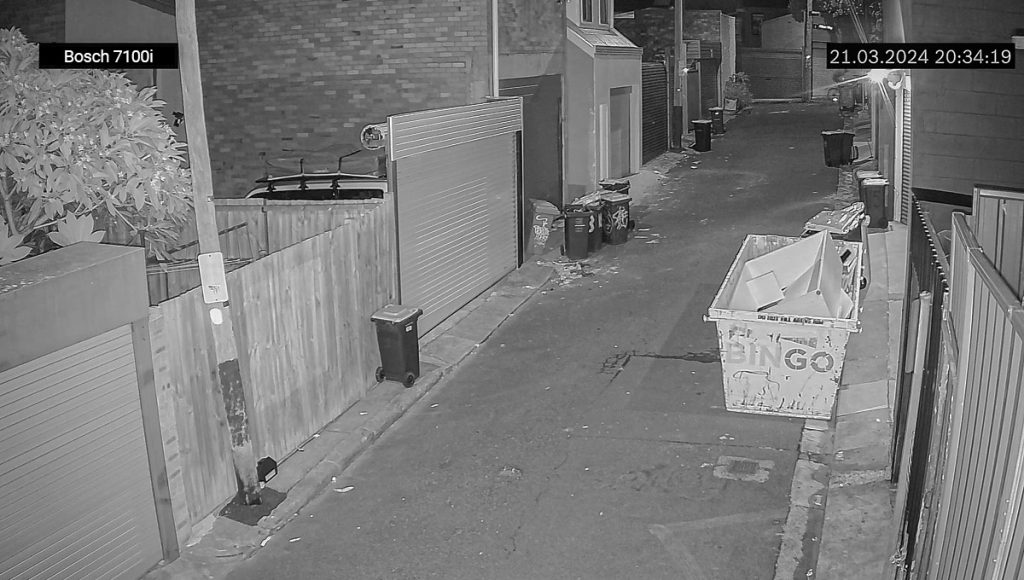
Something I notice with the smart IR is that it backs off in the face of headlights – the scene to the rear darkens momentarily before filling back in as the IR powers up again as the lights pass. I notice the same impact to a lesser extent when a neighbour turns on an external floodlight. The presence of that strong light generates very slight blooming and causes the IR to ease a touch across the scene.
On the subject of IR, one of the pleasant things about this spread is that it has no holes or central hotspots – it’s a very even coverage. There is some reflection from the no parking sign over the road – about 6 metres from the lens – but otherwise the array is very tight and helps the camera deliver a great image.
“This strong performance comes down to multiple factors”
Sitting at my workstation with nothing much going on in the lane, I’m beginning to despair until floodlight neighbour emerges from his back gate to chuck out some furniture out for a council collection. All this action is relatively close to the camera, but happily a few other neighbours come out into the lane to glare.
All this activity gives me an excellent opportunity to get a sense of the performance of this camera deep into the scene. With IR activated and at depth, I still feel I’m jagging recognition that borders on identification when subjects stand still at considerable depth – between 15–25 metres.
When it comes to additional details – clothing, hair, glasses, watches, shoes, dog breeds and harnesses – all these details are readily attainable. This strong performance comes down to multiple factors – the clever IR management being one. It delivers a very even spread close up and at depth with almost no flare, which makes for exceptional performance throughout. Depth of field at night is a particular strength.
Back in the lane, my neighbours get to chatting, and it’s effortless to get a sense of the flow of events from an initial “what the heck is that guy doing” through to classic mirroring behaviour. Finally, another neighbour walks down the lane with her dogs and at around 12 metres I’m sure I have court admissible ID in sub-2 lux, which a very rare thing, indeed.
Conclusion
Bosch 7100i IR Bullet Night Review — Bosch’s 7100i IR bullet camera is a strong performer day and night, but it really comes into its own in challenging applications where security managers need situational awareness deep into scenes.
The camera’s 4.7-10 mm optical zoom allows tight framing on areas of interest, but the camera’s overall performance is so balanced that wider angles of view at mid-focal lengths contrive to deliver outstanding performance in very low light.
The camera’s low light performance is strong in colour and monochrome on the street, but it goes to another level in the back lane in sub-2 lux with IR activated. Here, the range and spread of the pattern deliver excellent performance and penetration out to the quoted 85 metres and beyond.
We found that DORI values were to be had deep into our lane scene in sub-2 lux, with static-ish face recognition/identification out to at least 15 metres at focal lengths of 5.5 mm. At the same time, the camera’s IVA delivered reliable performance to 80 metres on test, allowing delivery of valuable notifications in higher security applications.
In our opinion, the 7100i IR bullet is the best performing IR camera we’ve tested in this focal range – if you need a mid-angle of view and reliable long-range performance in challenging light, this camera deserves very close attention.
Bosch 7100i IR Bullet Features (Bosch 7100i IR Bullet Night Review)
- 4.1MP Sensor Delivering 2688 x 1520 pixels
- Motorised Lens – 4.7-10mm
- Ratings – IP66/67 IK10
- Frame rate – 1-60 fps (I’m using 30)
- Horizontal field of view – 103–53 degrees
- Electronic image stablisation
- IP rating – IP66, IP67, IP6K9K
- Starlight X low light technology
- WDR technology – HDR X
- Operating temperature -50 to 60C
- Sensor type – 1/1.8-inch CMOS
- Video compression – H.264, H.265, MJPEG.
“Bosch 7100i IR Bullet Night Review Highlights Strong IR Performance.”
Bosch 7100i IR Bullet Night Review Bosch 7100i IR Bullet Night Review





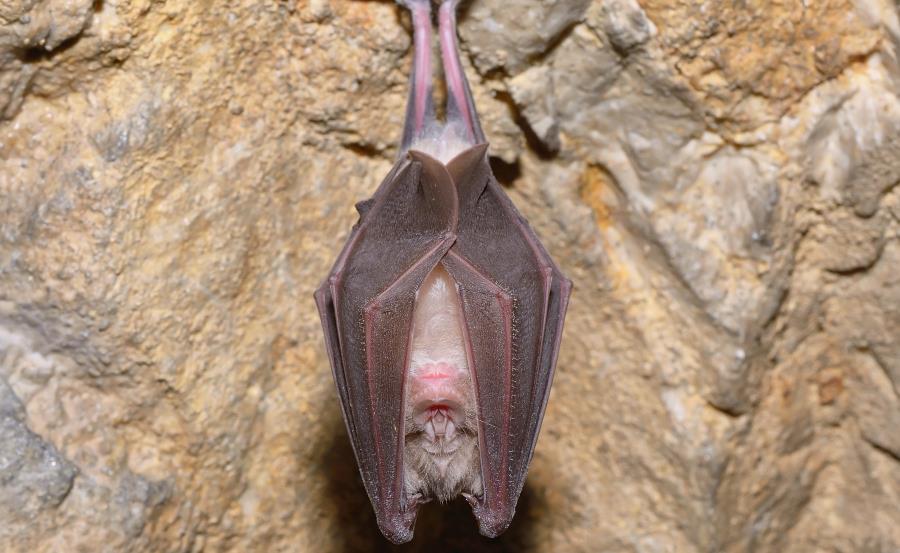
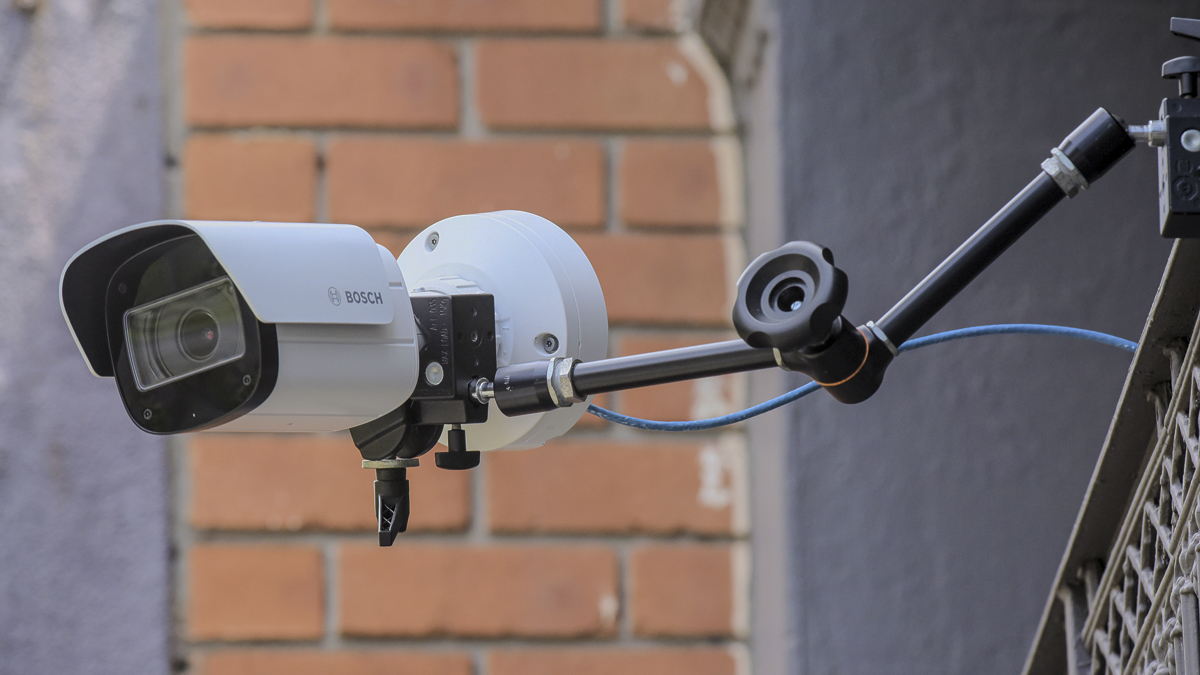
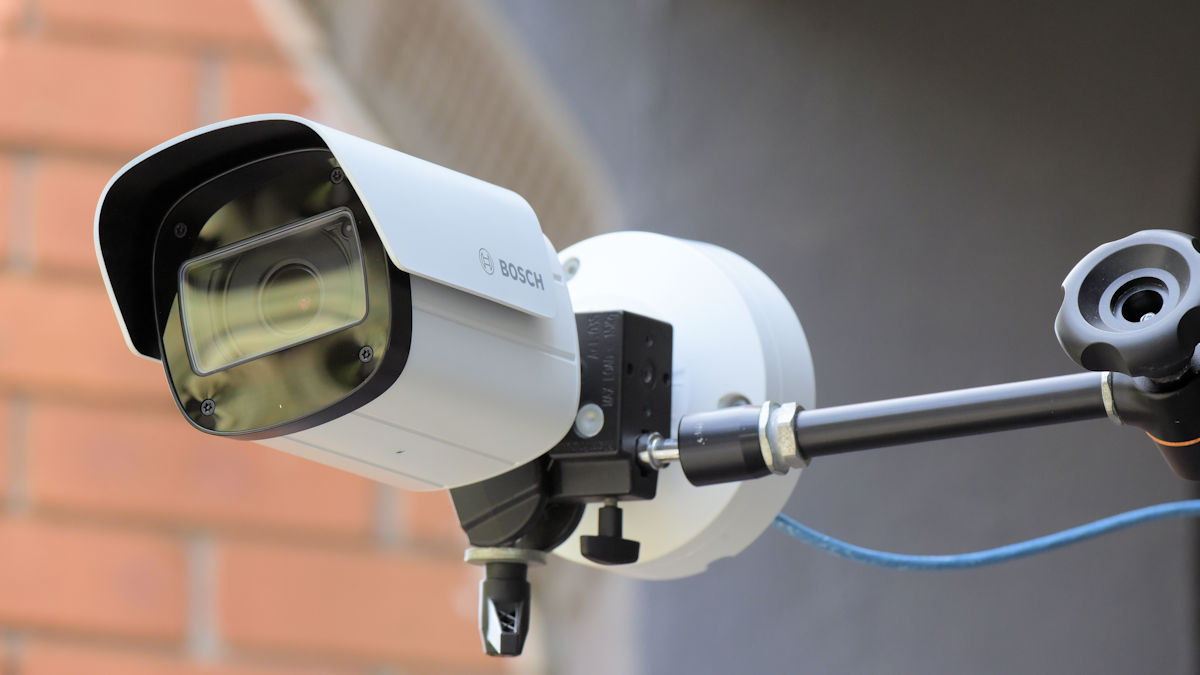
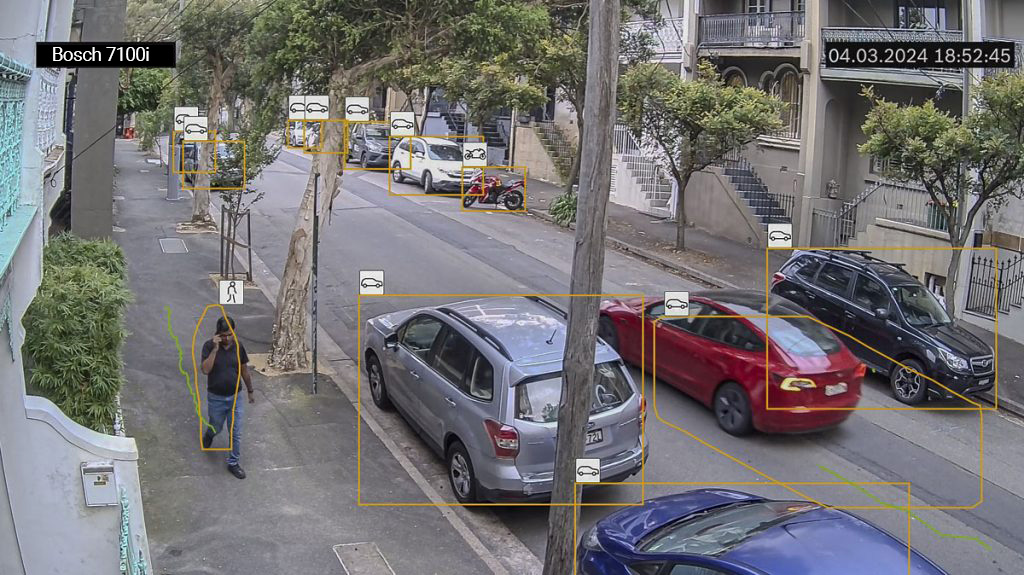
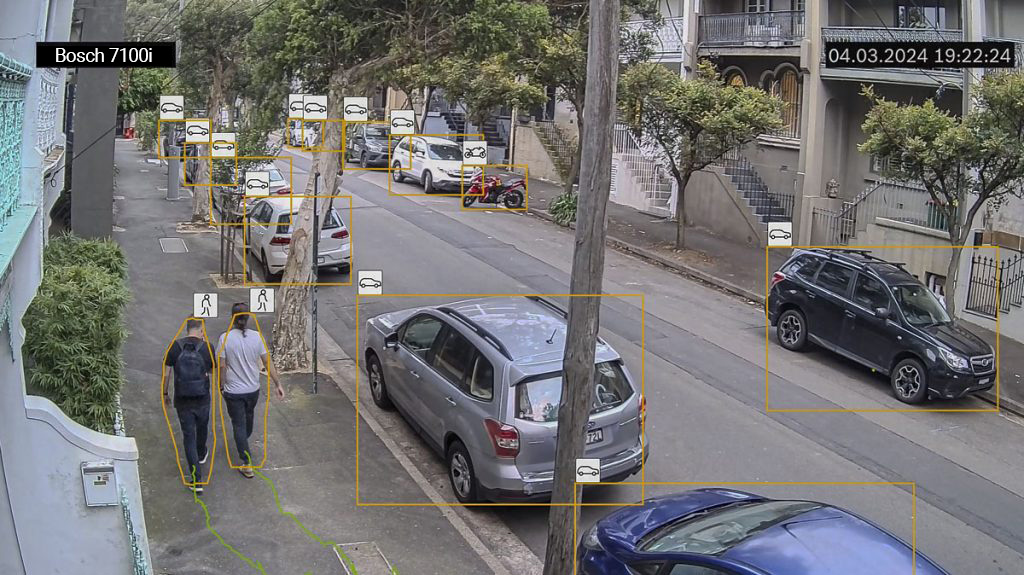
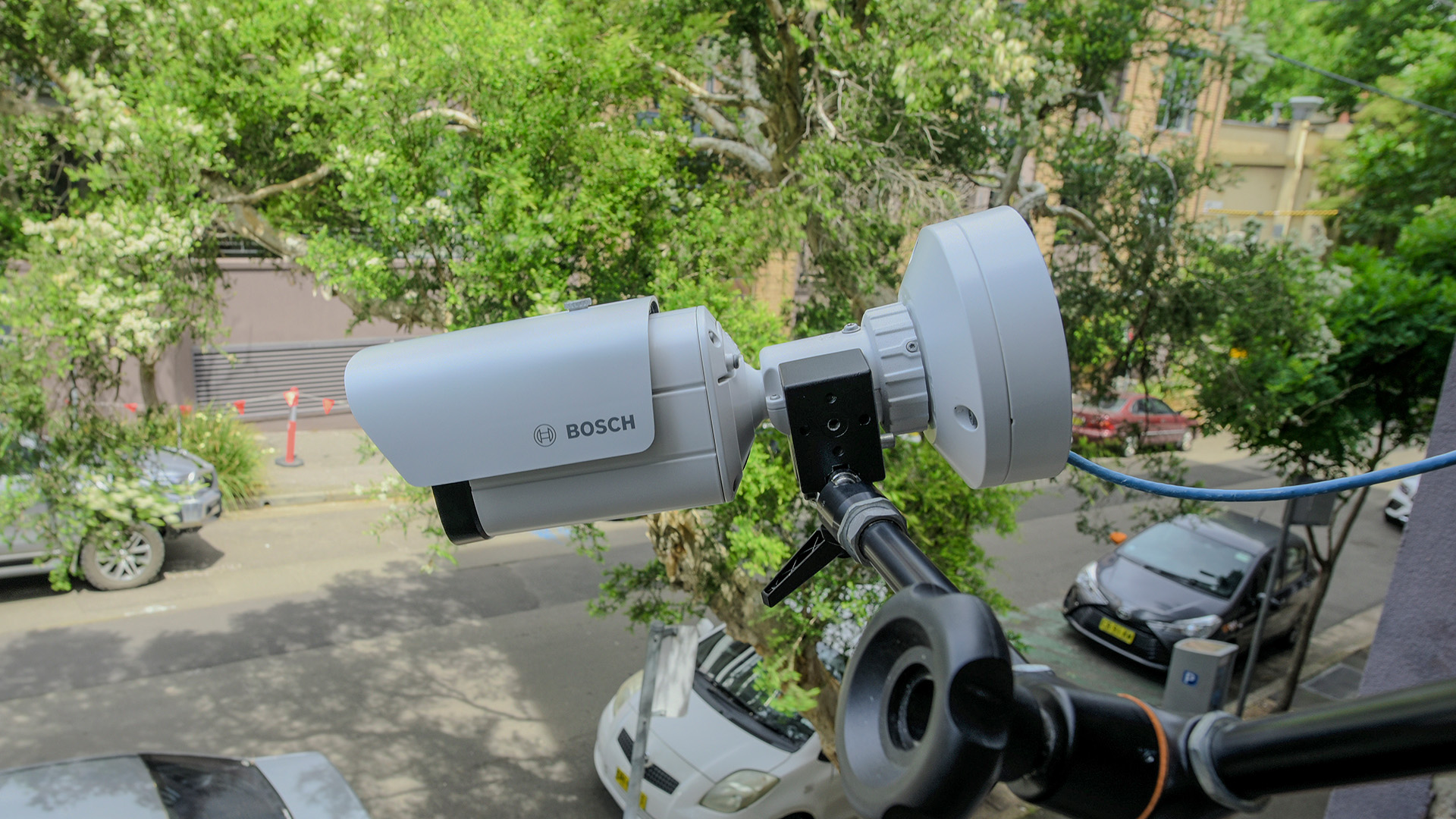
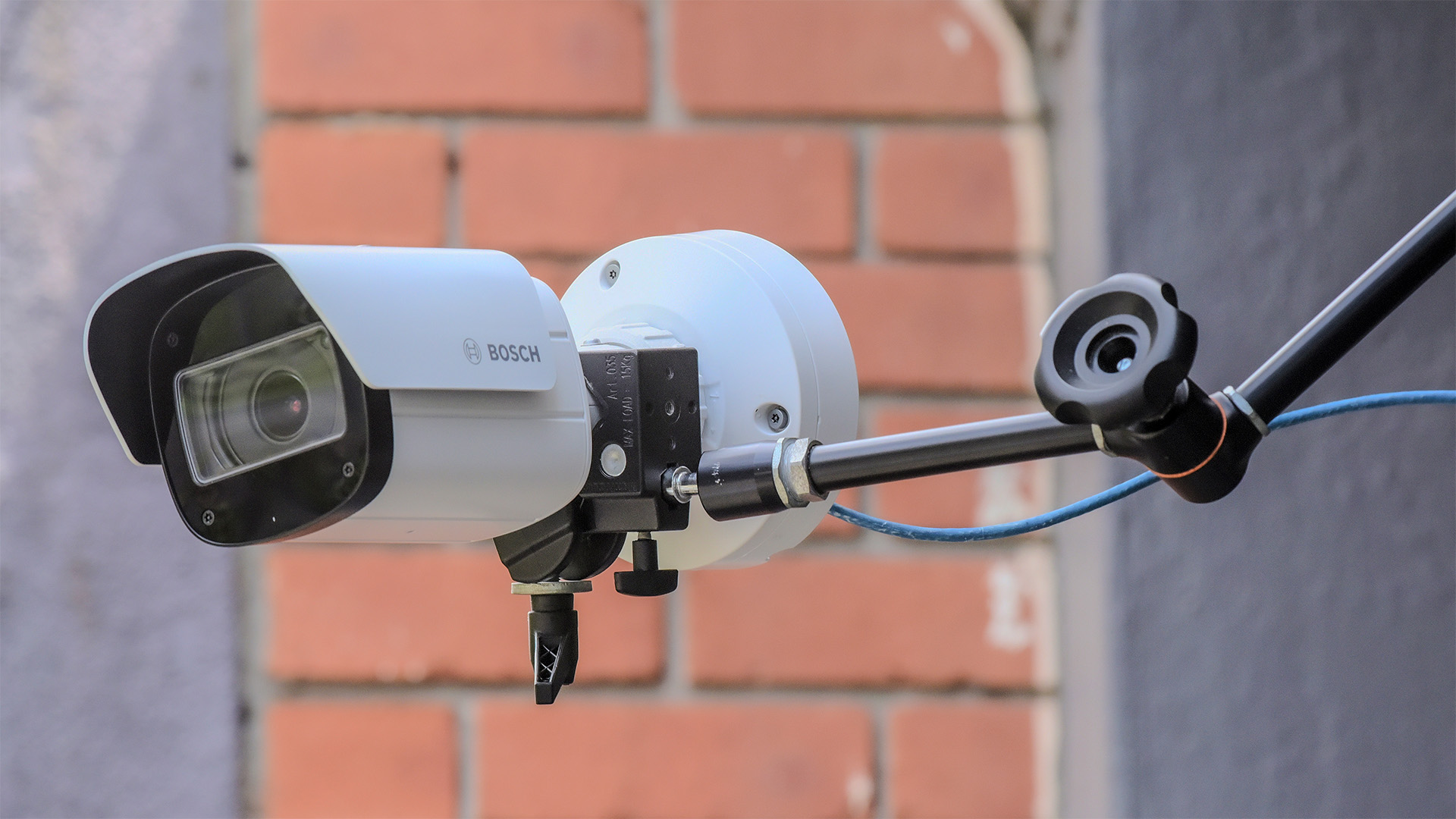
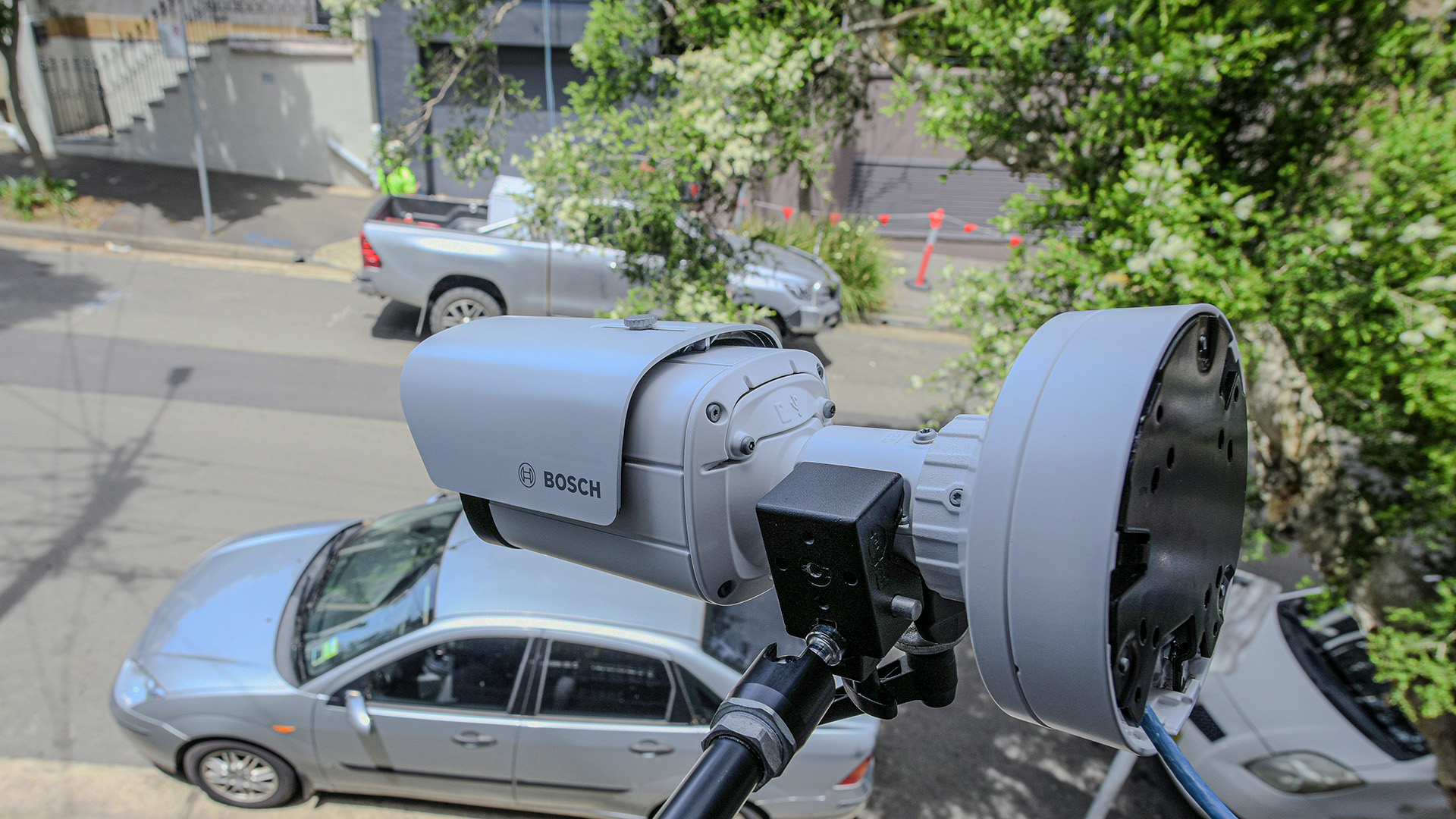
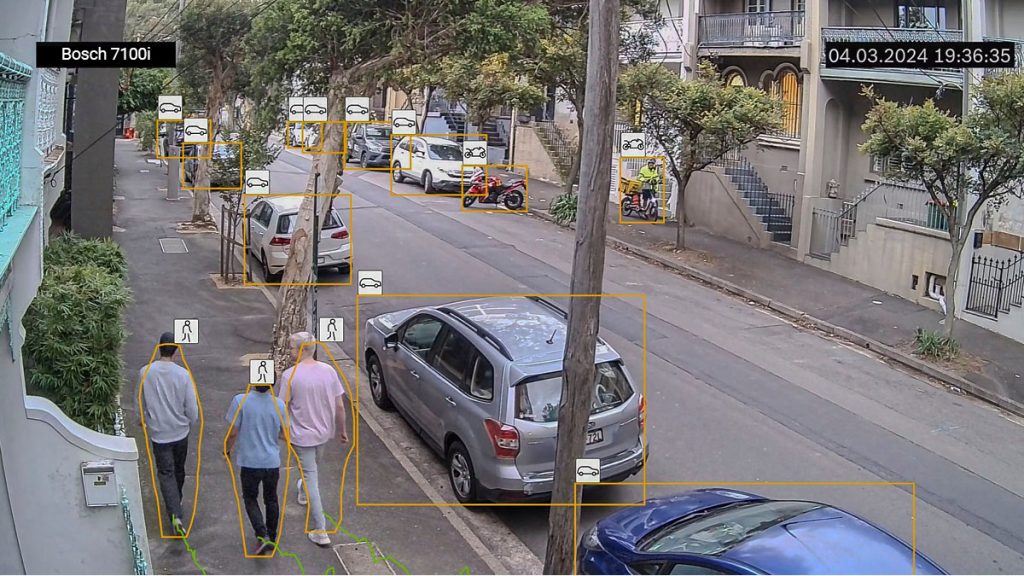
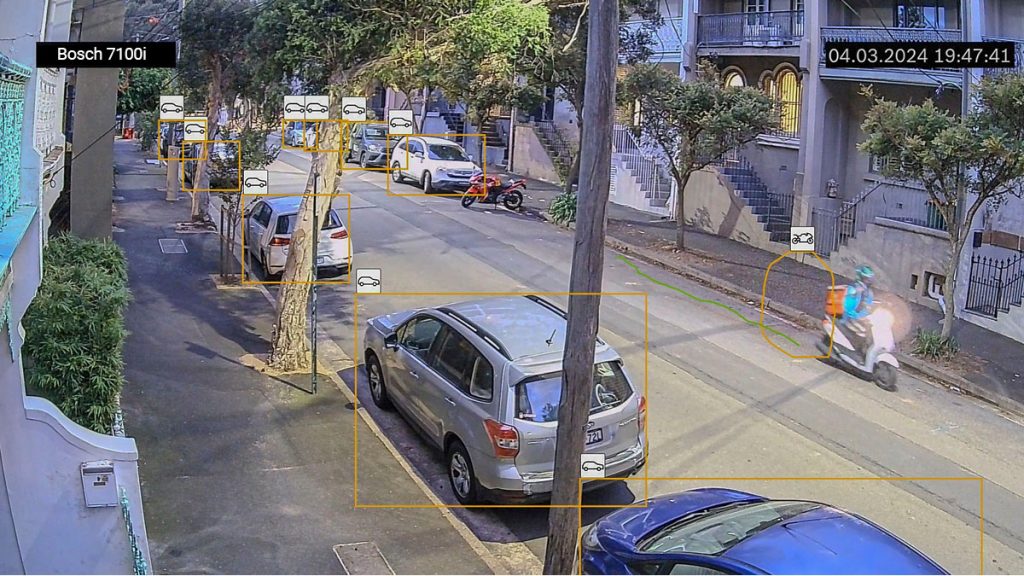
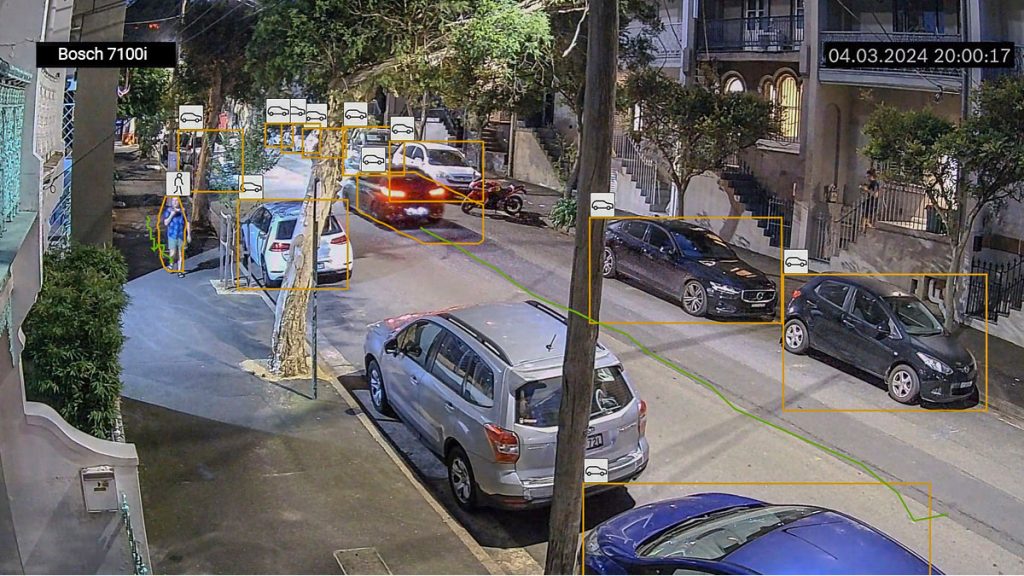
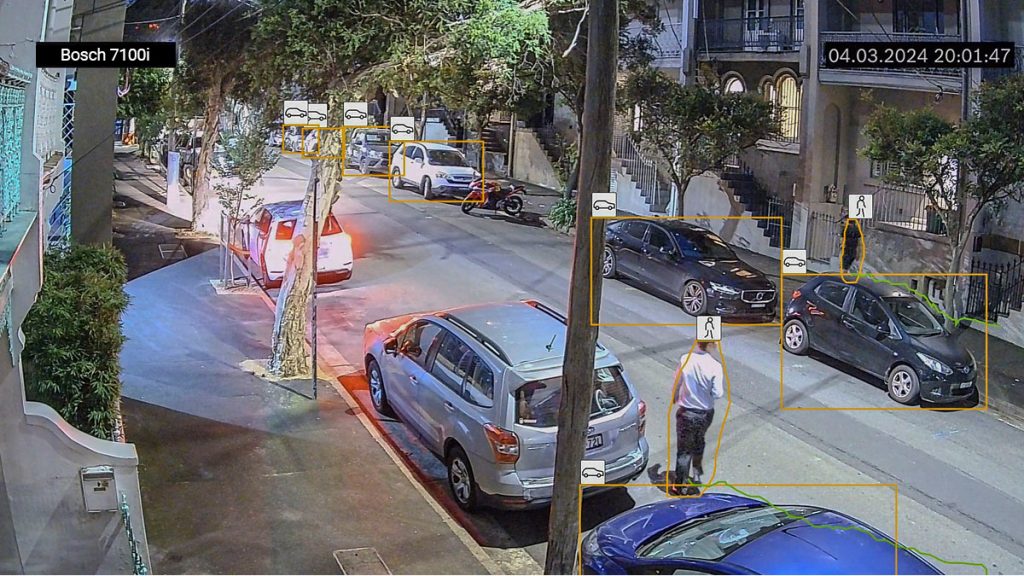
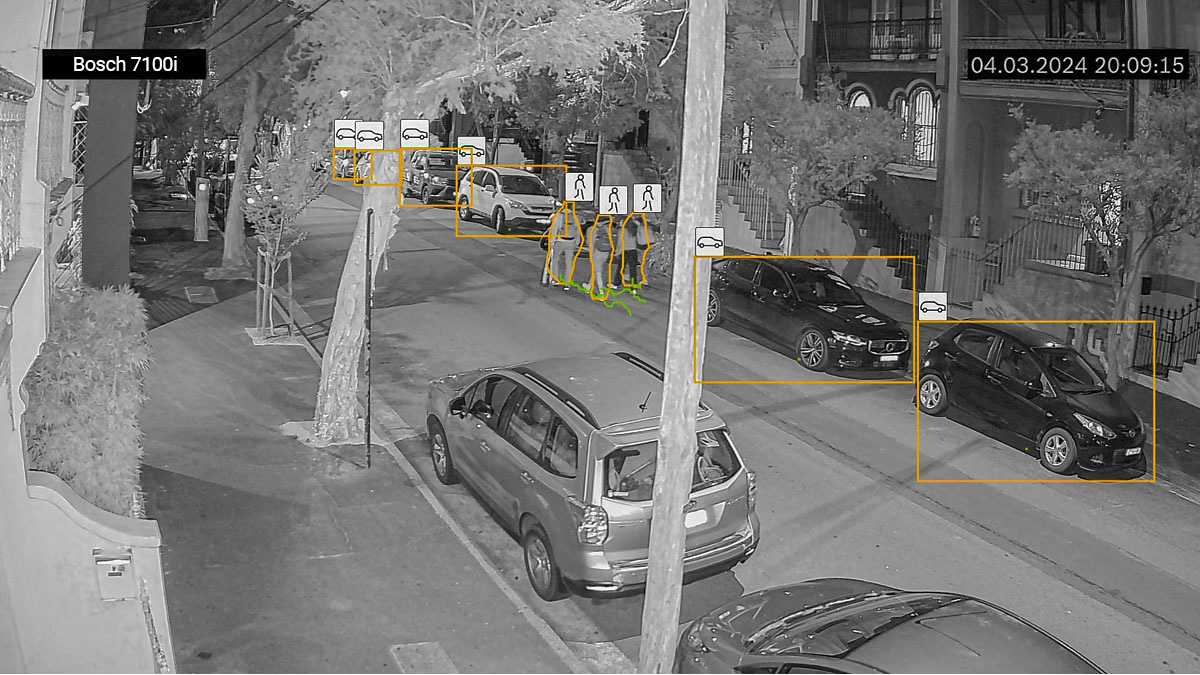
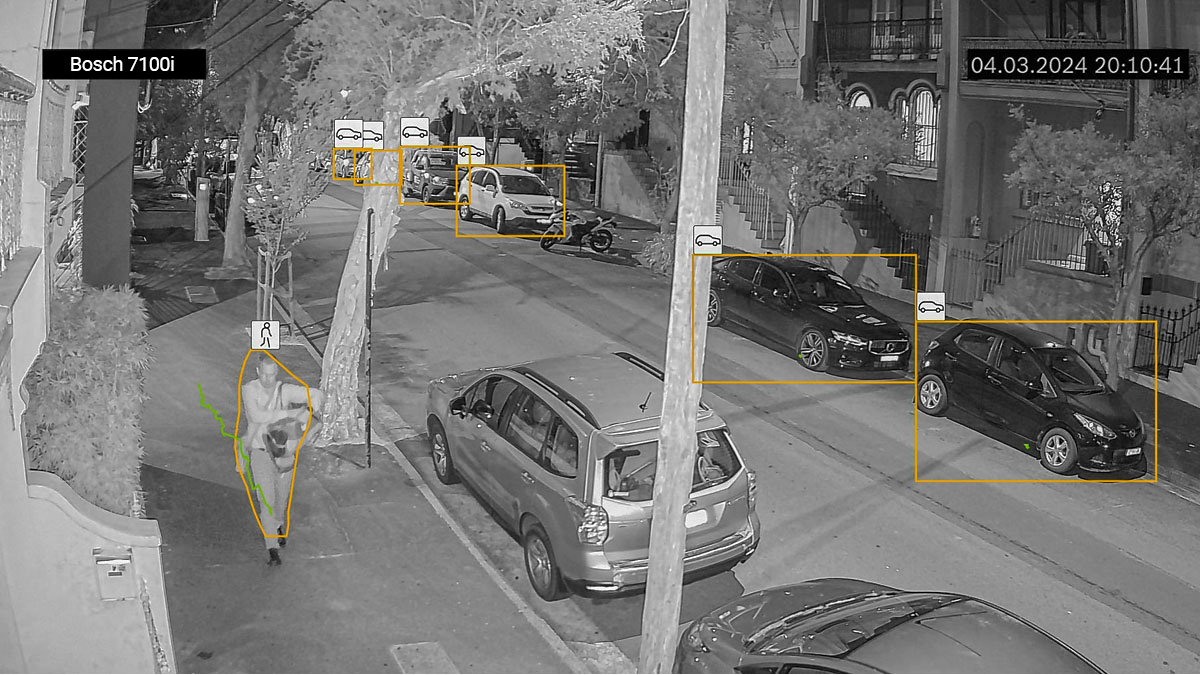
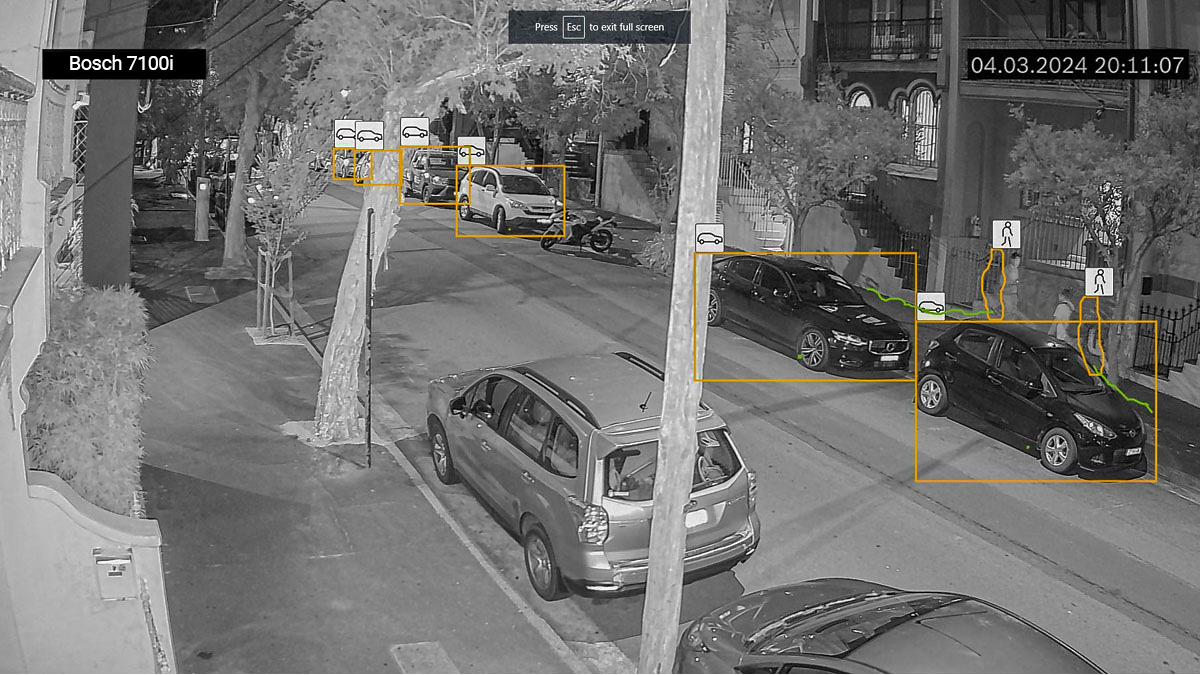
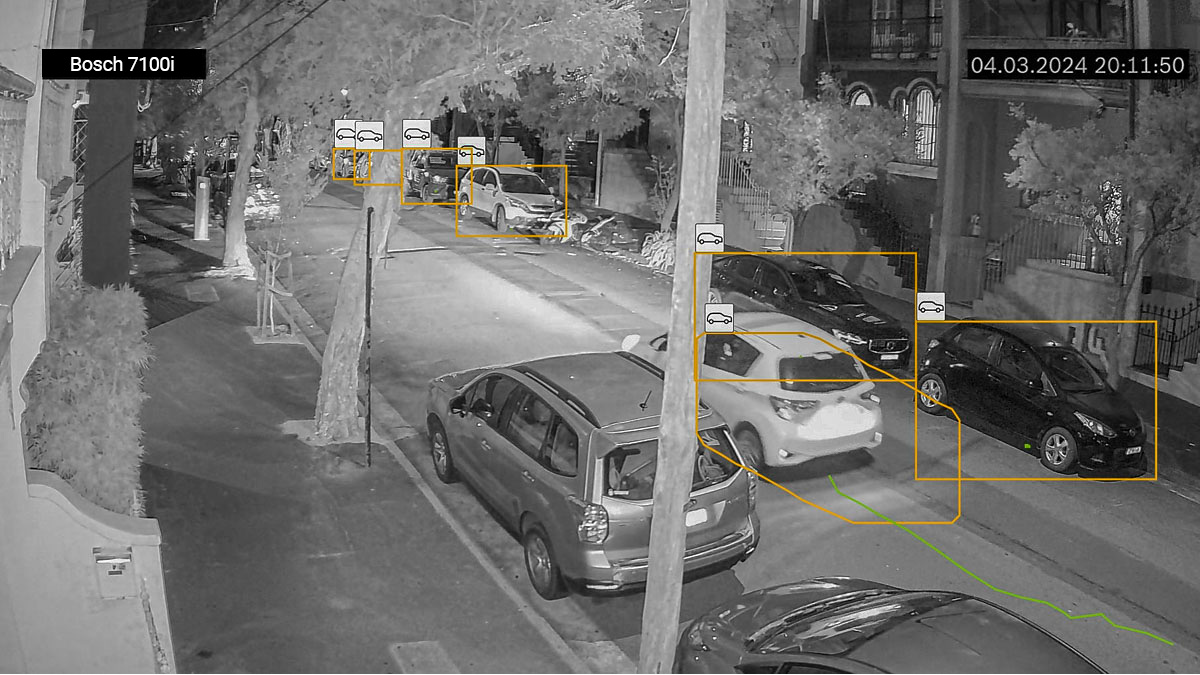
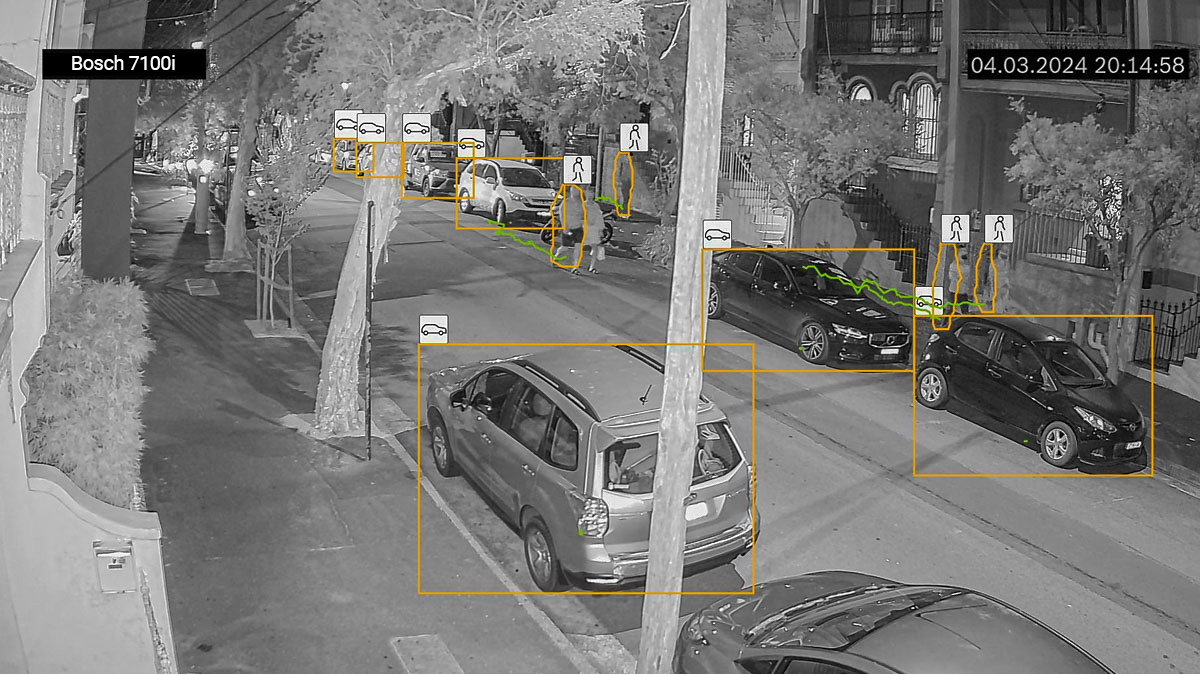
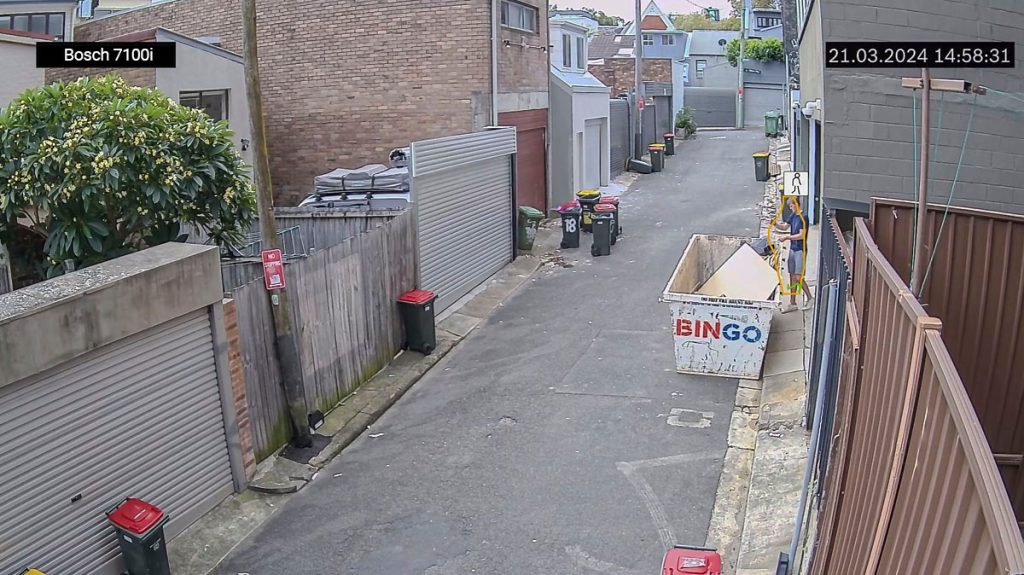
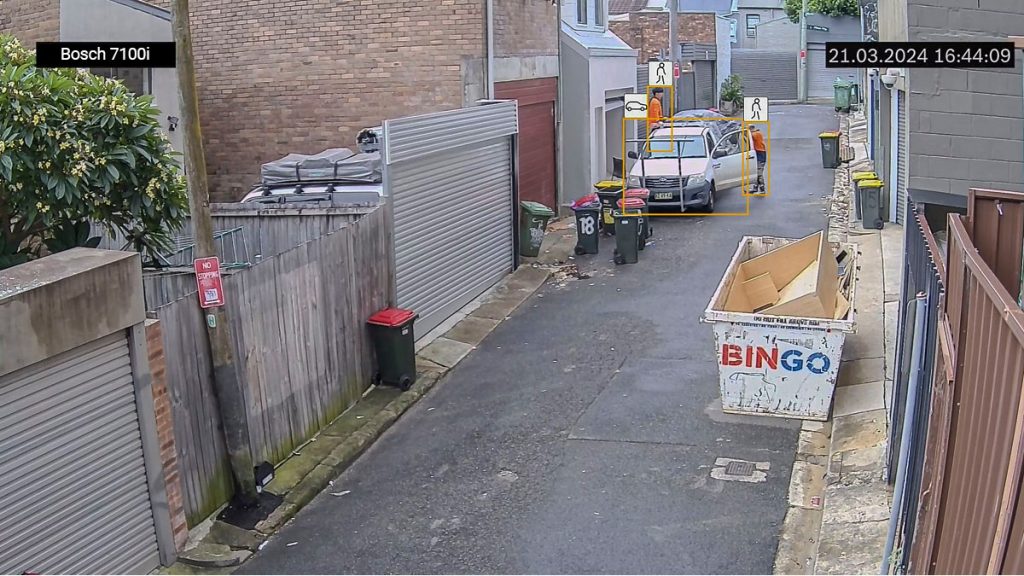
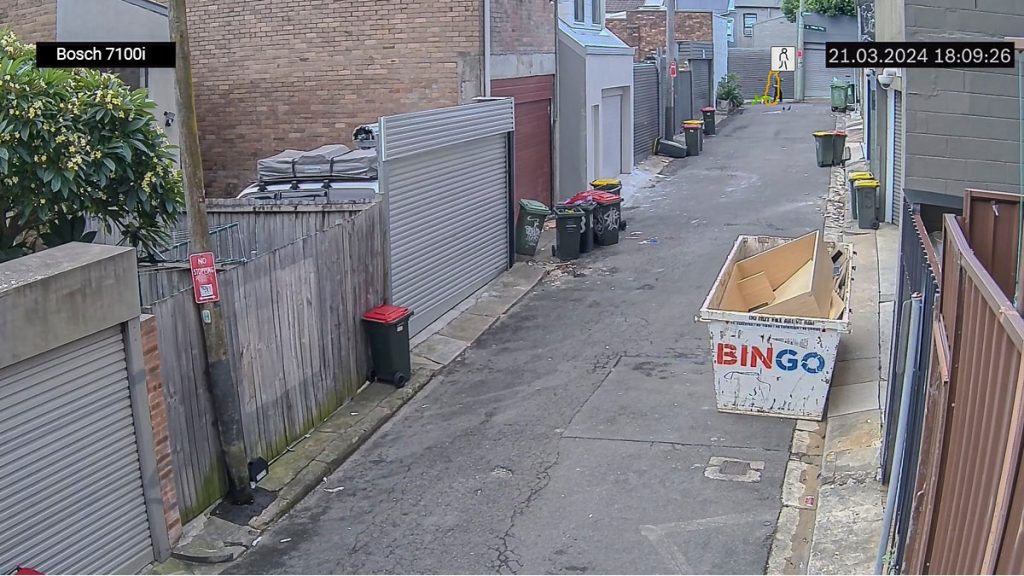
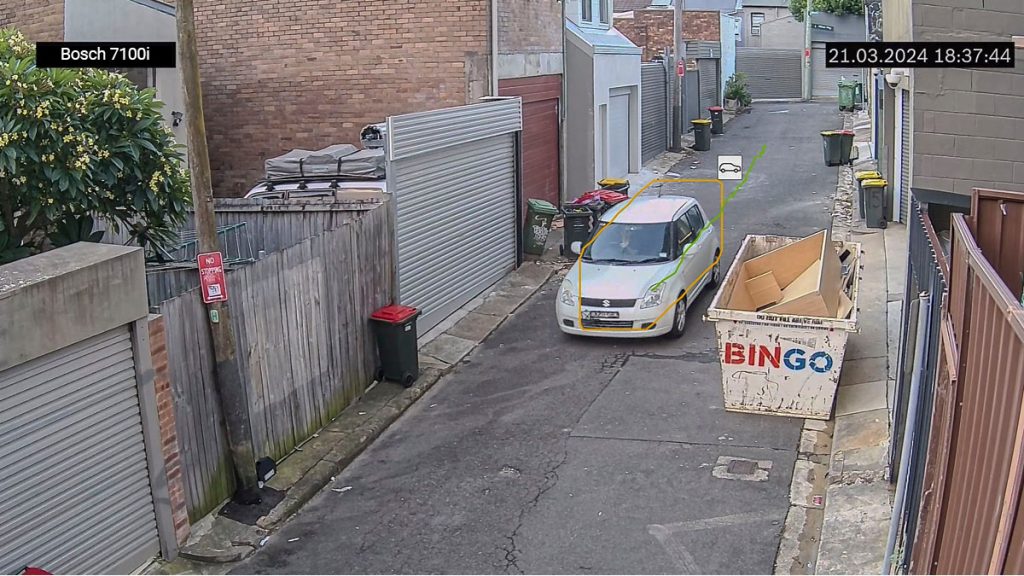
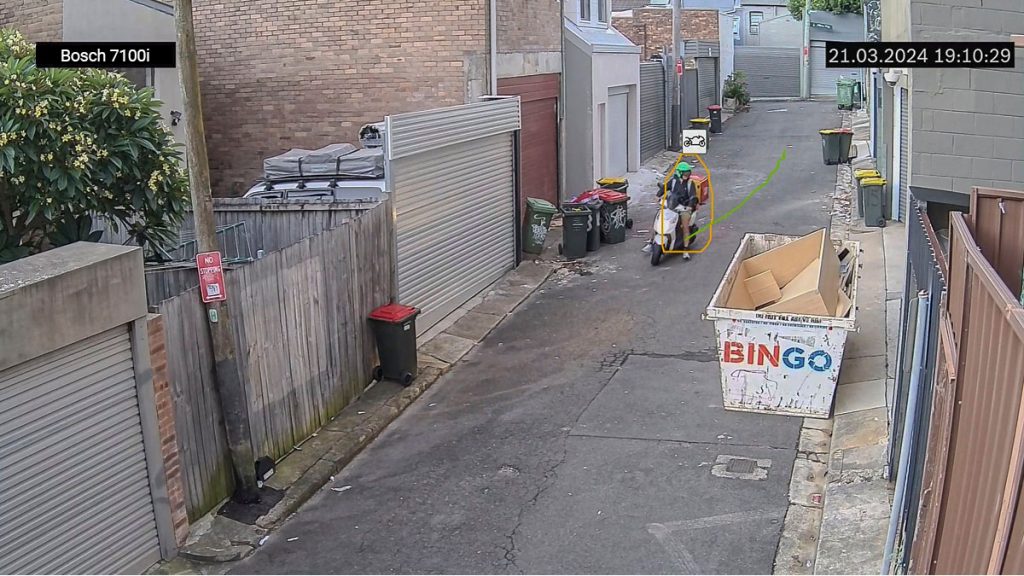
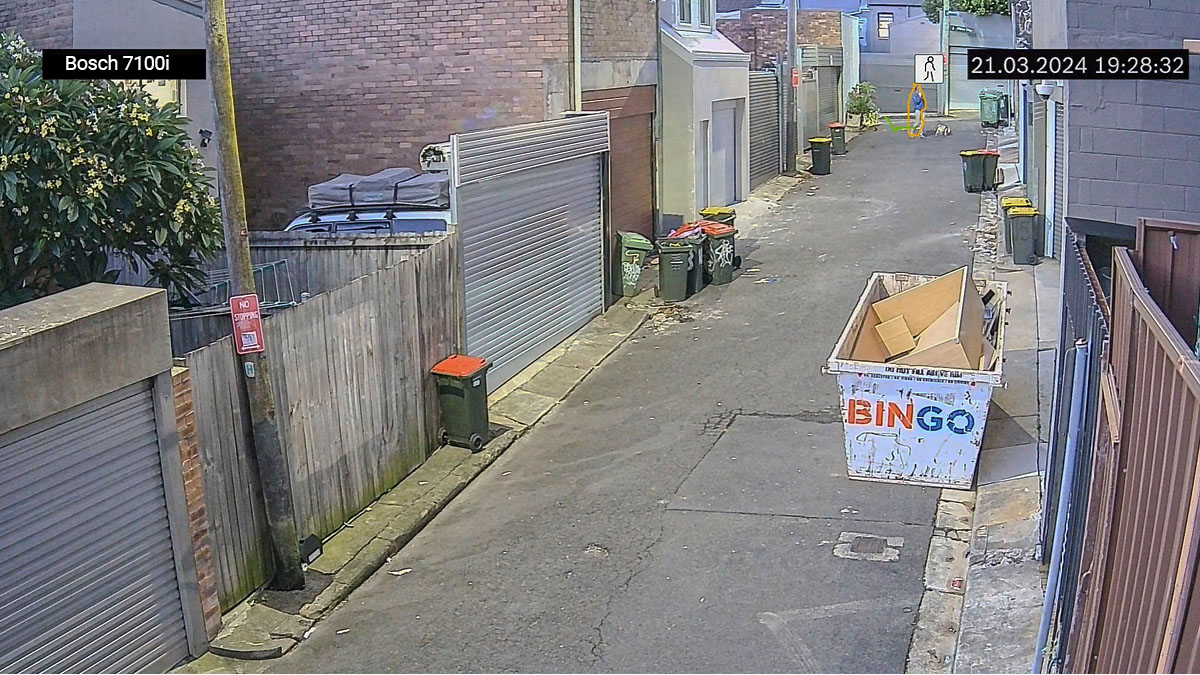
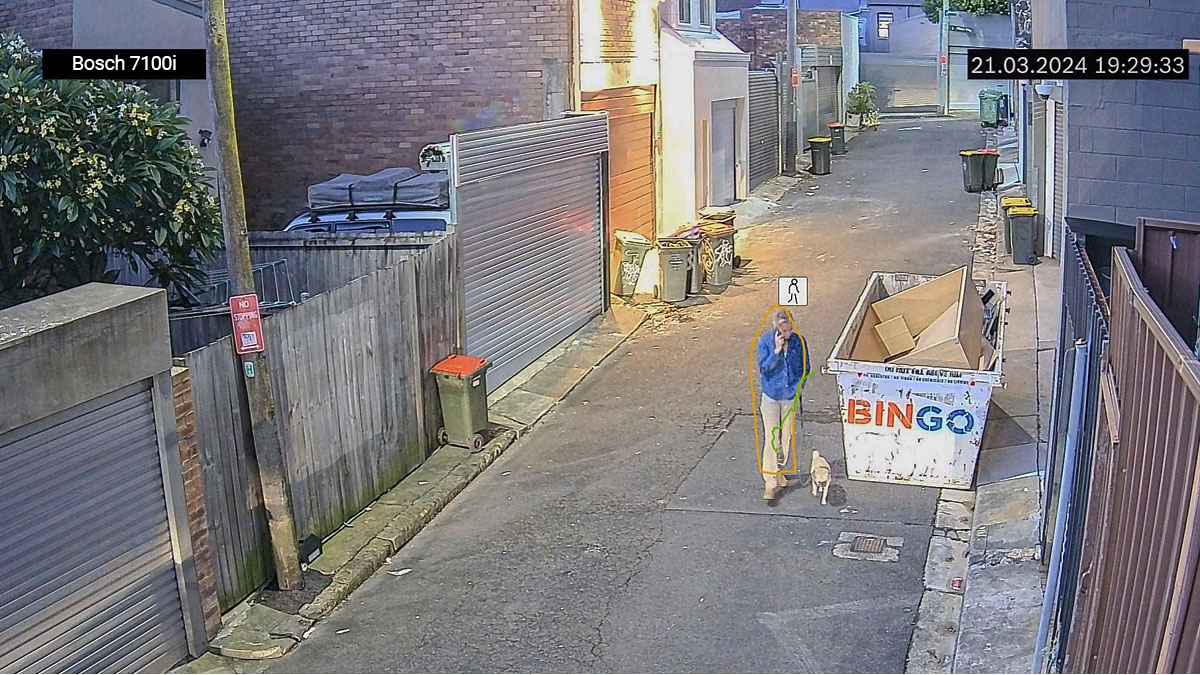
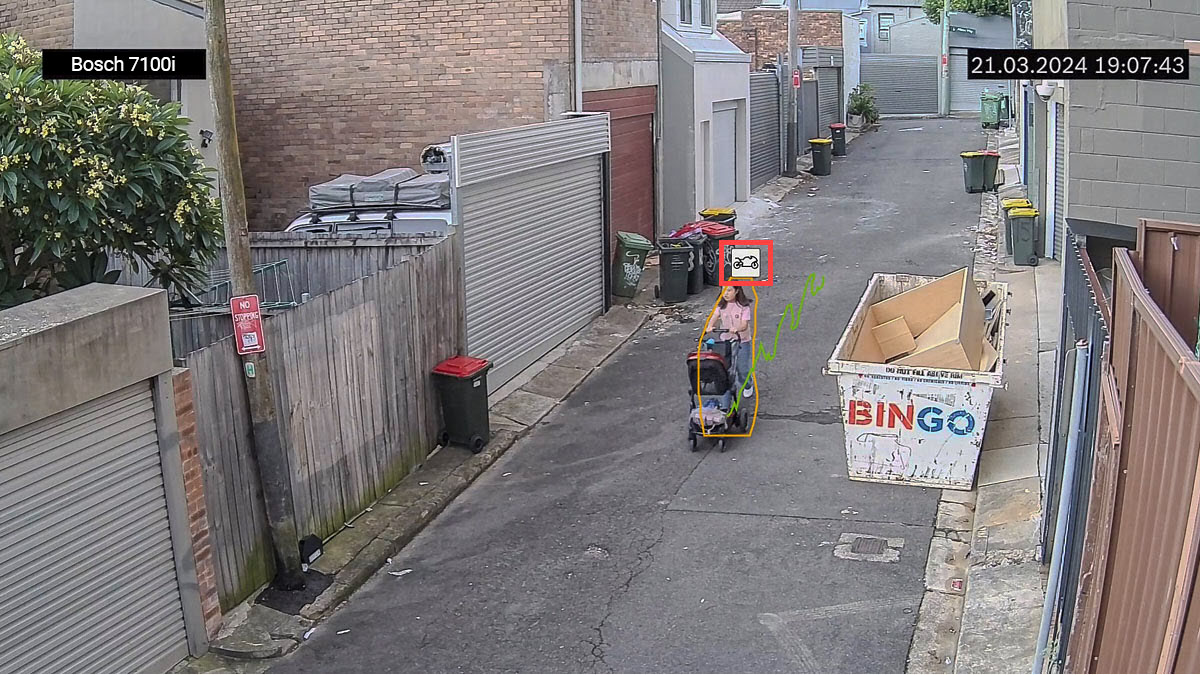
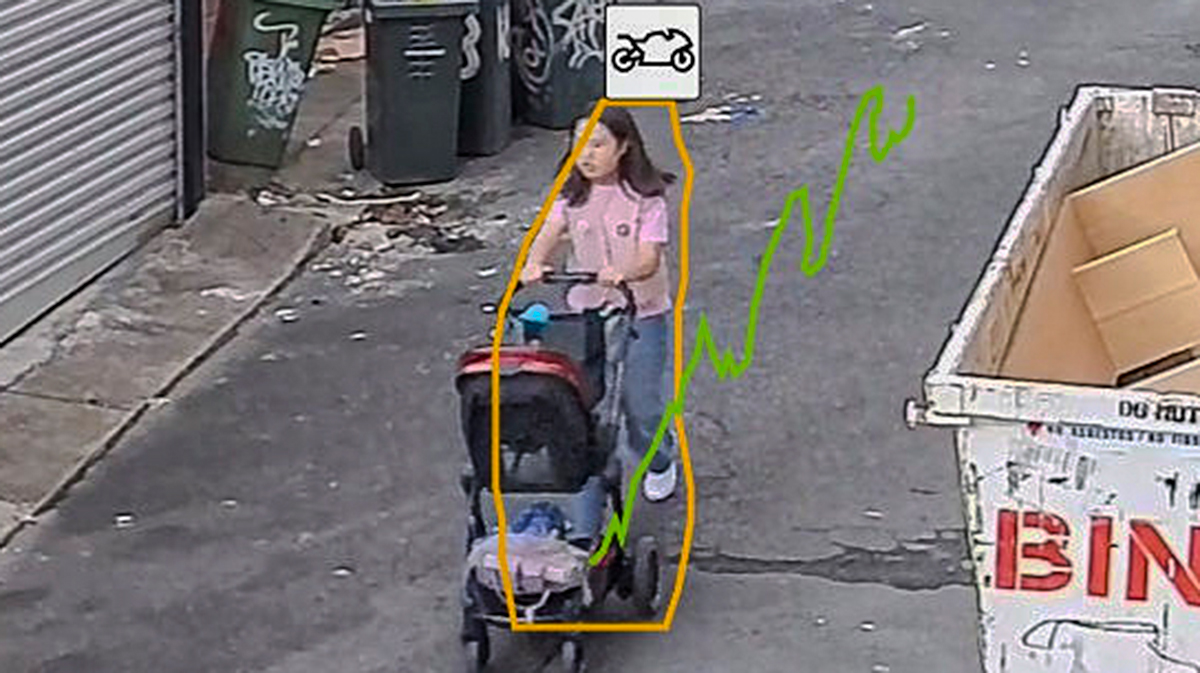
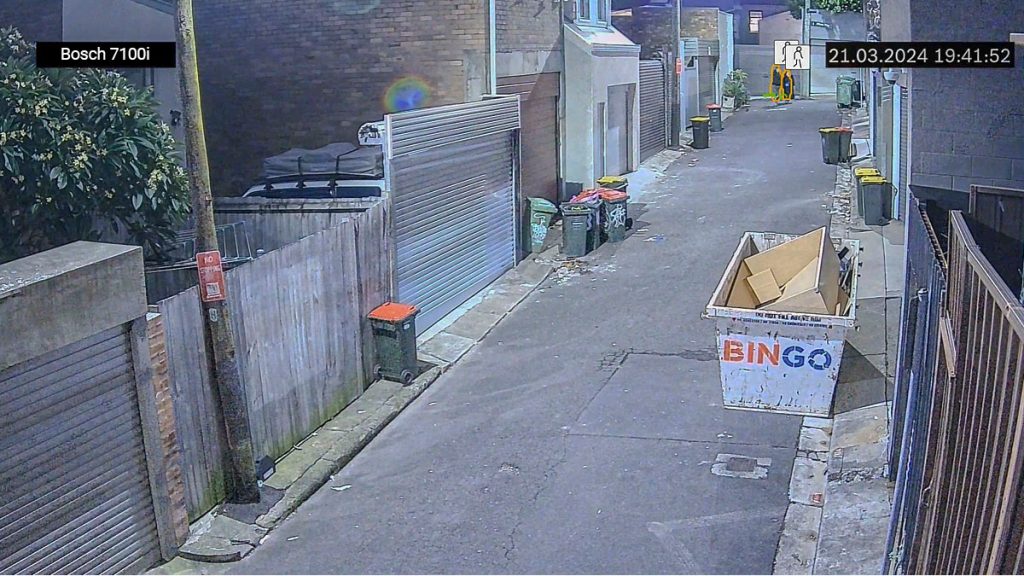
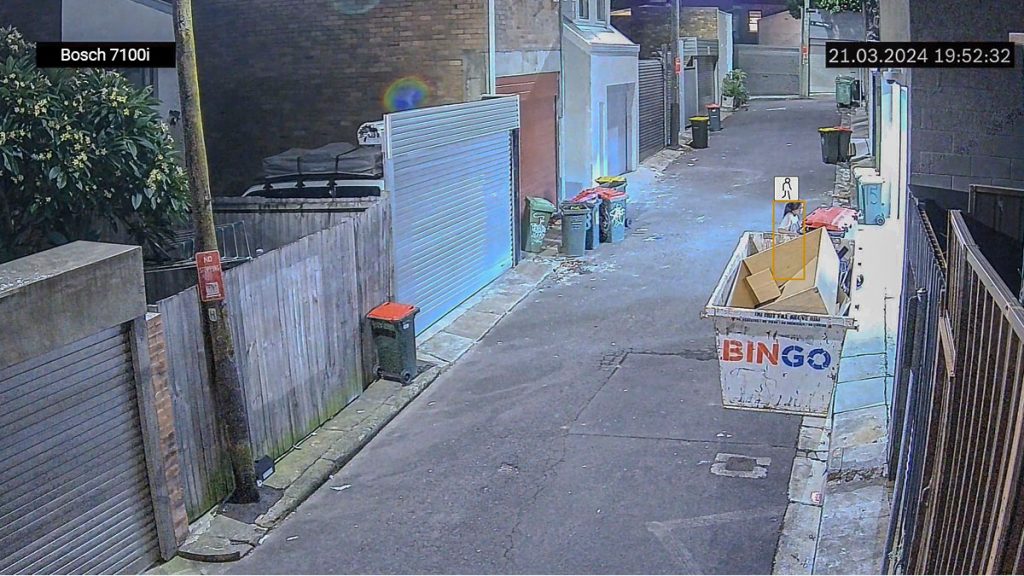
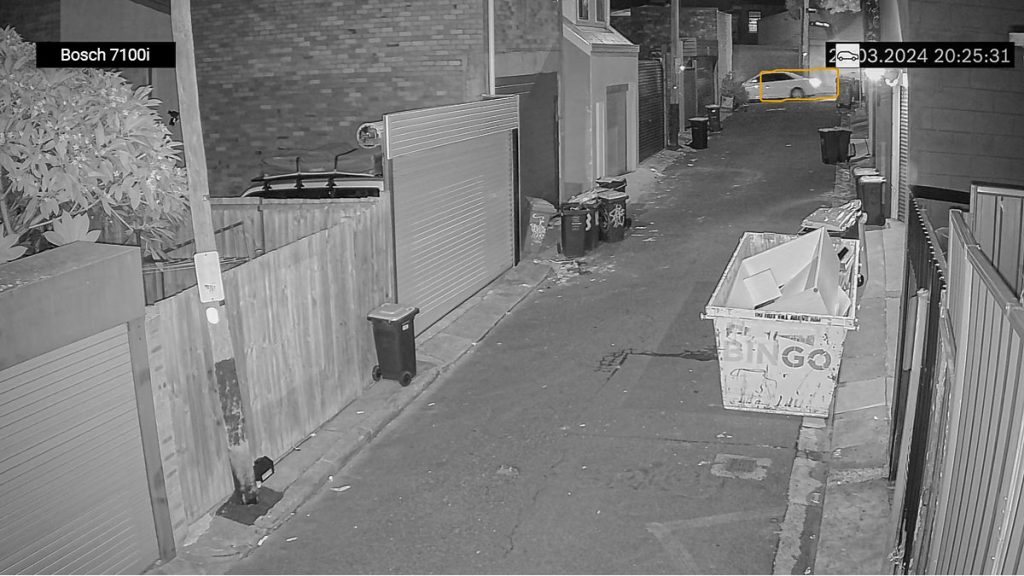
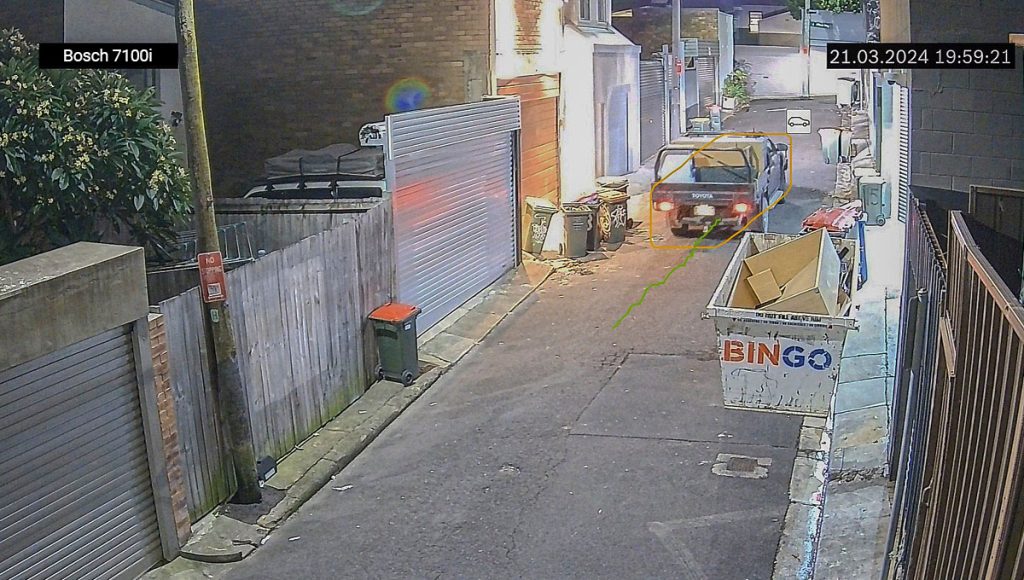
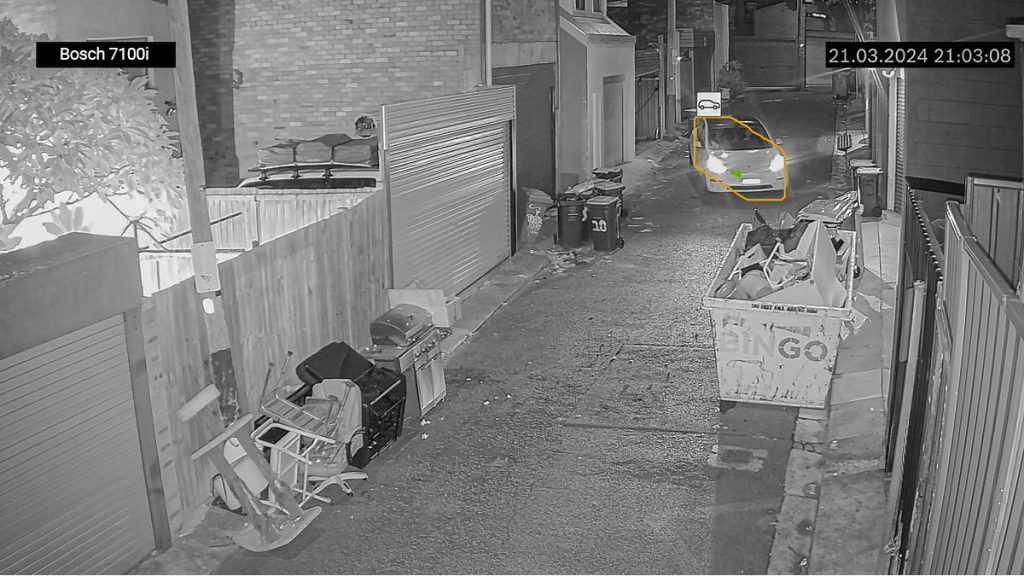
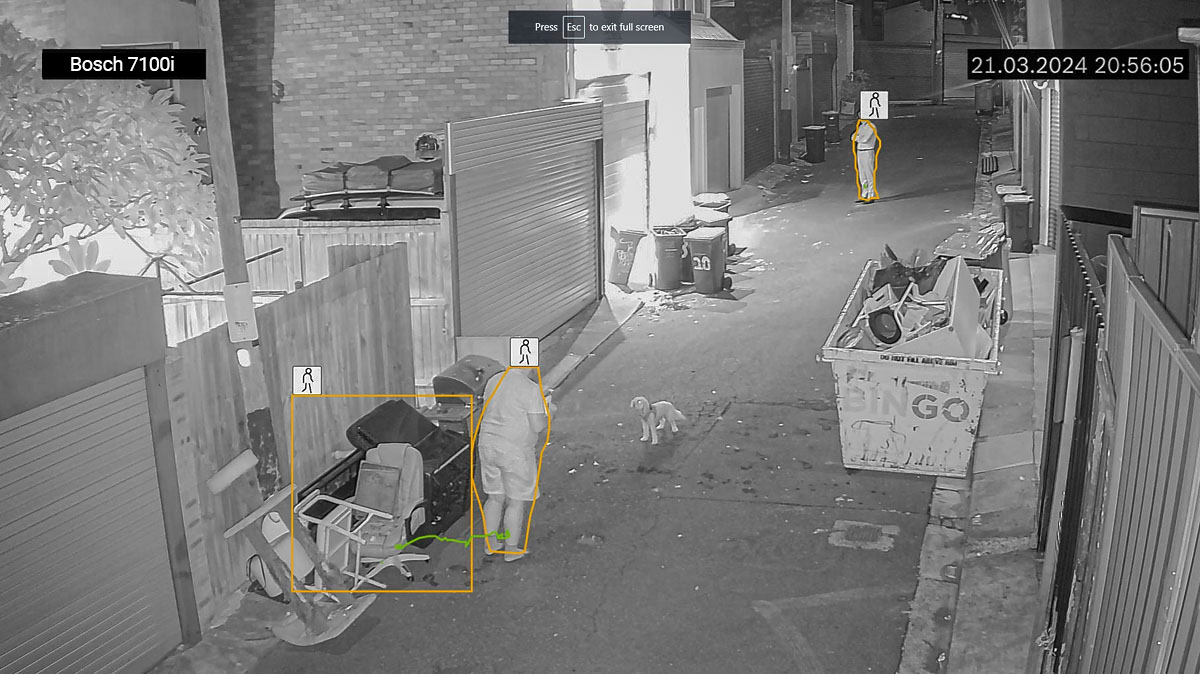
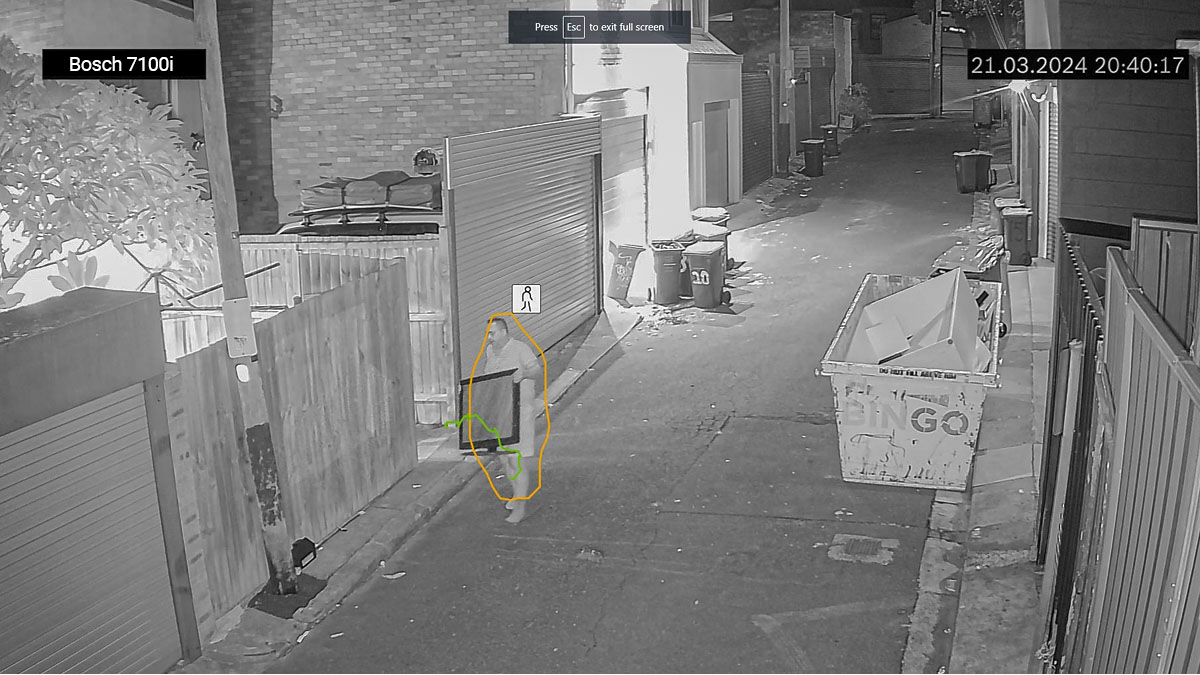
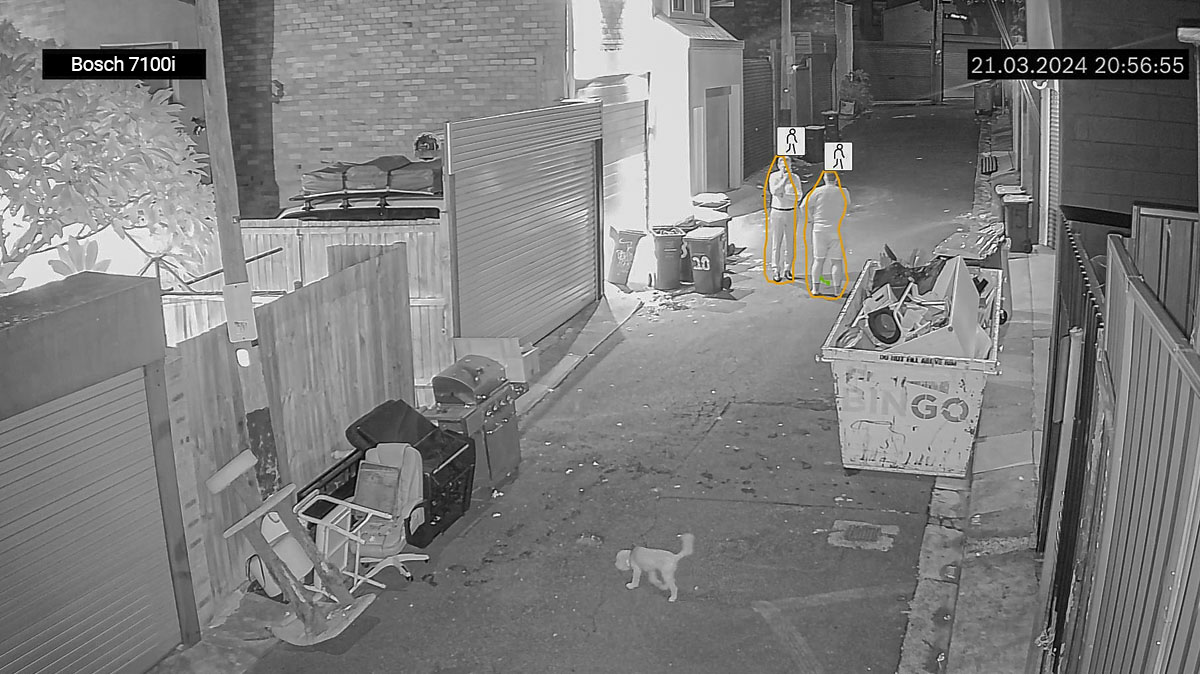
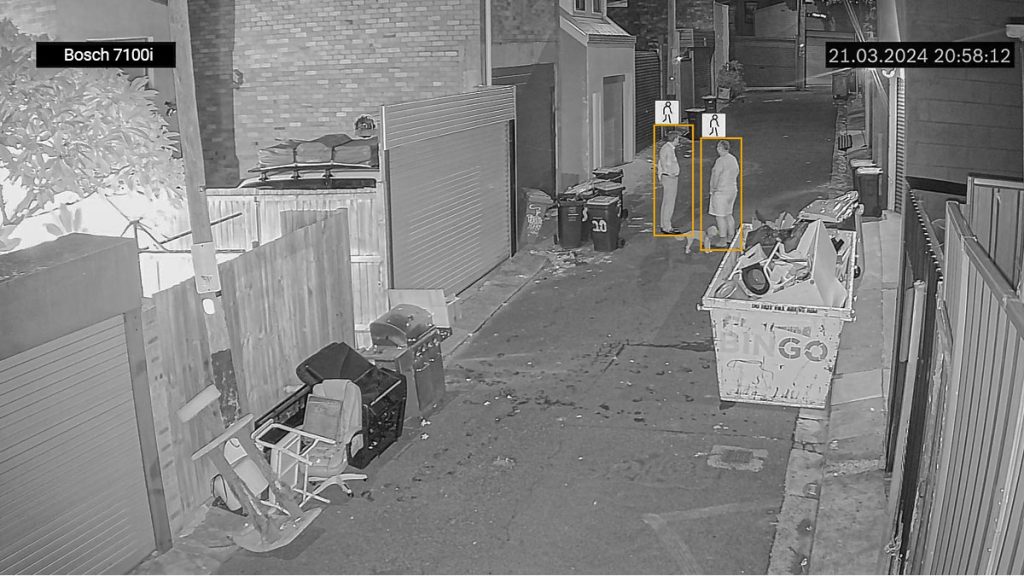
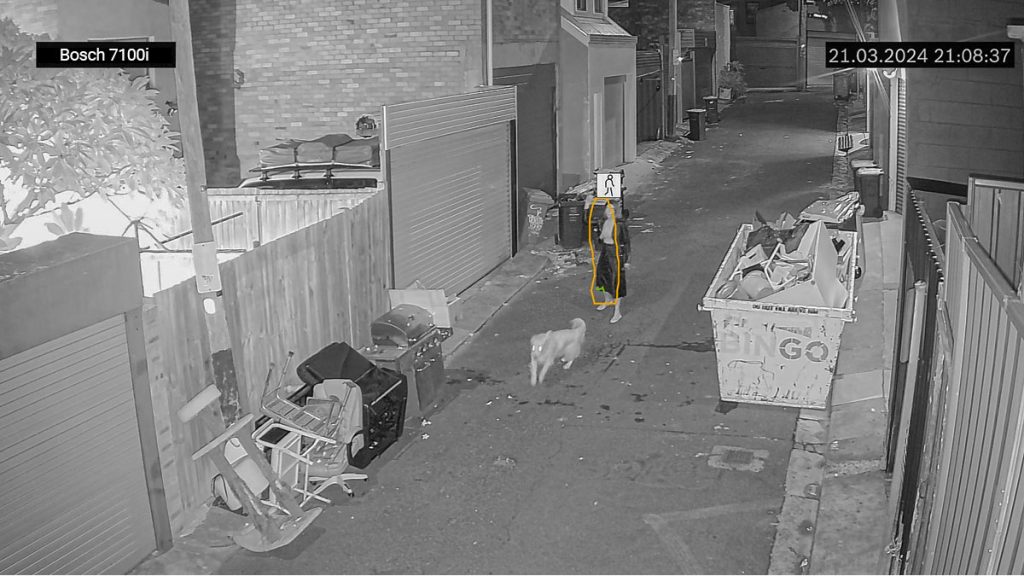
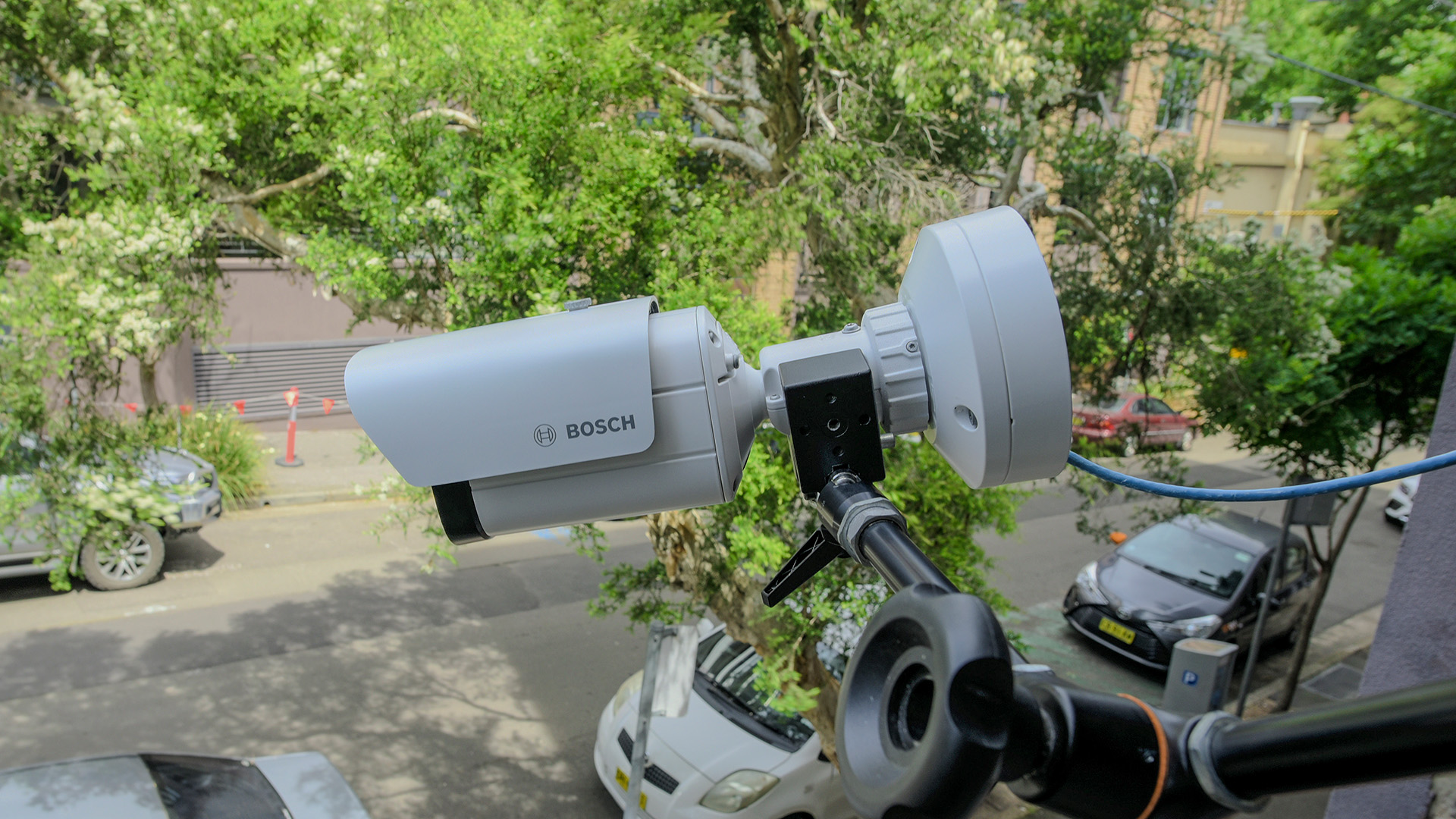





Hi John,
Thanks very much for your comprehensive review on our Dinion 7100i IR 4MP 4.4-10mm model bullet camera…great work! Just so your readers are aware this series is available in 2, 4 and 8mp variants inc 10.5-47mm zoom lens options, white light/940nm illuminator & mounting accessories. They are c/w IVA Pro buildings and perimeter AI analytics and IVA pro traffic is an add-on. Too many additional features and benefits to mention here. A recent addition to the series is a 4k 1/1.2″ , low light sensor, 5.9-13mm lens model.
Cheers
Syd
Cheers and thanks for that input, Sydney!